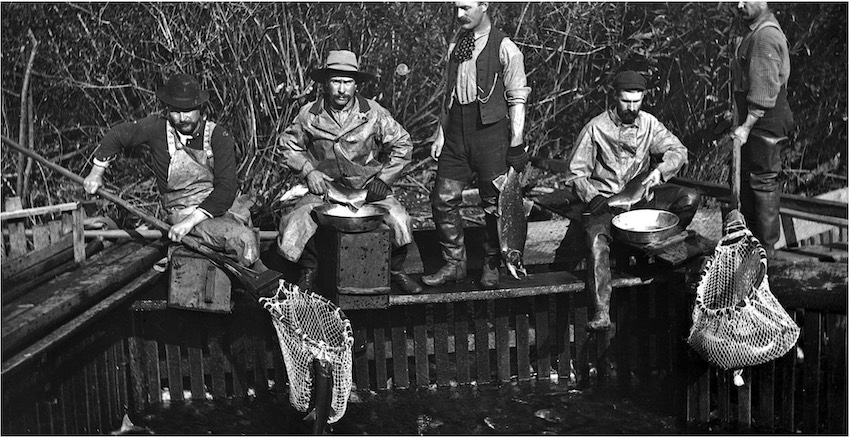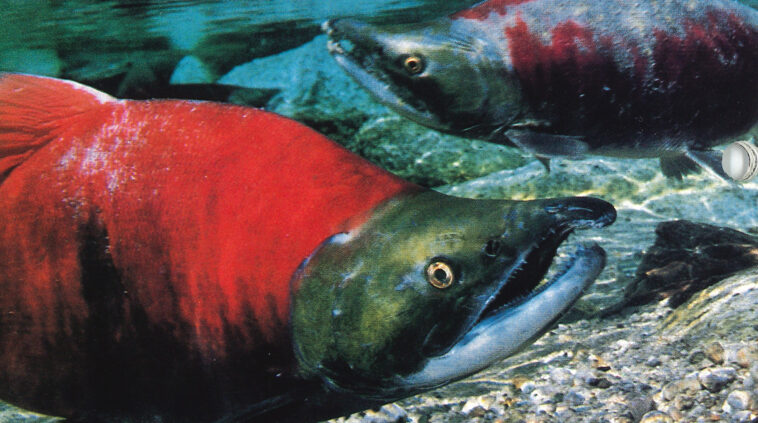If you ever wanted a crash course in the past, present and future of salmon hatcheries on the west coast, here’s your chance.
Hakai Magazine has published a four-part series on hatcheries that runs to nearly 19,000 words.
“After around 150 years of managing Pacific salmon with all the wrong goals in mind—more fish, more profit—and relying heavily on fish hatcheries to meet those flawed objectives, the path to sustainable and healthy wild salmon runs is murkier than ever,” reads an intro to the series, which is titled “The paradox of salmon hatcheries.”
Since reading the entire thing could take two hours or more, we’ve picked out four things that really stood out to us. Think of this as the Coles Notes version.

Scientists have been finding flaws in the hatchery model since the 1920s
“Almost a century ago, a Canadian scientist revealed that hatcheries were at best failed experiments, and at worst monuments to delusional thinking,” Jude Isabella writes.
Warmer oceans are leading to more plentiful but smaller salmon
“While the number of salmon has shot up, the size of fish is going down: in Alaska, chinooks have shrunk the most at eight percent compared with pre-1990 sizes, and elsewhere, such as on the Columbia River where the “June hogs”—chinooks that weigh more than 35 kilograms—used to spawn each summer, mighty chinooks are a thing of the past,” Miranda Weiss writes.
Hatcheries can help salmon but they’re no replacement for healthy habitat
“Do we commit to evermore human intervention to keep even hatchery fish alive, or somehow summon the political will to replant native forests, stop impeding rivers, and return watersheds to a more natural state so salmon can get back to sustaining themselves?” Vanessa Minke-Martin writes.
Hatcheries can be a crucial tool for some Indigenous communities
In a profile on the Nisqually Tribe, Ashley Braun writes that “the Nisqually’s two hatcheries, while not their ideal scenario, combat the ongoing injuries to salmon—and his tribe—during the gradual process of healing deep wounds. But not everyone has understood this point.”







